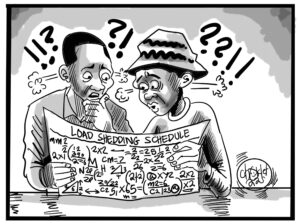Global copper prices have reached record highs in recent months; in late May the metal was trading at $10,460 (K236,211) per tonne. For a copper-based mining economy like Zambia this should be generating increased tax revenues, and subsequent social benefits, as companies maximise their production to take advantage of these high prices. Across the private sector this is happening, however at government-run mines this is unfortunately not the case.
Production at Konkola Copper Mines (KCM) has plummeted massively since the government effectively took over control of the mine from Vedanta Resources in May 2019, with integrated production (i.e. copper produced using KCM mined ore) falling by almost 70%. Whereas once it was averaging 8,000 tonnes per month, that figure has now plummeted to approximately 2,000 tonnes per month. Mine development has dropped significantly which is going to put thousands of jobs at risk and with potential shutting down of mining business.
In response the government has tried a number of desperate moves aimed at improving production rates and bolstering profit margins. It has slashed the 5% import duty on foreign concentrates in order to allow KCM’s smelter to run and it has even instructed ZESCO to supply the mine with electricity free of charge.
However, the company is still facing a cash crunch, largely as a result of inefficient and inept management by the government. Figures for last month still show integrated production struggling at barely above 2,000 tonnes.
All the while this is costing money for Zambian workers and tax-payers. KCM is not currently paying PAYE contributions on its employees earnings or supplying workers’ compensation contributions. It is also not paying any taxes, leaving the national coffers out of pocket to pay for public services. The moratoriums on import taxes and electricity rates are also further eating into the state’s ability to maintain vital services such as roads, hospitals and schools.
Furthermore, Zambians are missing out on the windfall they ought to have expected from high copper prices, following a difficult period in 2020 when the commodity price crashed. Given that copper production is worth 10% of the country’s GDP, this is money that Zambians cannot afford to go without.
This nosedive in productivity follows the government’s decision to hand control of KCM from majority shareholders Vedanta to a business liquidator in May 2019. Experts believe that government appointed Provisional Liquidator intends to break up the mine in order to sell off its constituent parts to other investors, likely companies backed by the Chinese state.
Vedanta had previously been Zambia’s largest public employer and responsible for 1/5th of the country’s overall copper output. The government’s ousting of such an important investor has sparked fears of a potential return to the nationalisation policy of the 1970s and 80s, when copper production fell by over 65%. It is important to recall that in the era of government control over KCM, the costs of poorly managed investments and losses were borne by the Zambian taxpayer
For their part, Vedanta have promised an additional $1.5 billion (K33.8bn) in investment if the government hands them back control of the mine. The company has previously proved instrumental in rolling back the clock on nationalisation, pouring $3 billion (K67.7bn) worth of investment into KCM when it first acquired the site from Anglo-American in 2004. This in turn contributed to Zambian copper production returning to its pre-nationalisation peak of 720,000 tonnes in 2014.
Although the full reasons for the fall out between KCM’s previous owners, Vedanta, and the Government remain unclear the consequences of this has led to a lose-lose situation at a time where national debt is at an all-time high. The overwhelming priority of the Zambian people is jobs and social investment, it is currently getting neither out of this sorry state of affairs. Perhaps now is the time for a rethink on the government’s strategy towards KCM.


















